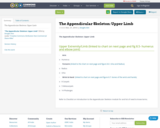
The Appendicular Skeleton: Upper Limb
- Subject:
- Applied Science
- Material Type:
- Activity/Lab
- Date Added:
- 11/21/2016

The Appendicular Skeleton: Upper Limb
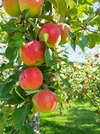
Using the context of apples, students will apply their knowledge of heredity and genetics to distinguish between sexual and asexual reproduction as they explain how new varieties of apples are developed and then propagated to meet consumer demand for a tasty, uniform, consistent product. Photo by Sokmean Nou on Unsplash
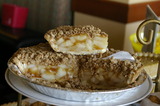
Students are asked to assist a production manager of a local school that will be producing apple pies as a fundraiser. Students need to understand rates and starting conditions to help schedule the right number of volunteers for each production station so that the maximum number of pies can be produced.
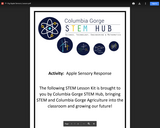
In this lesson, students will explore apples using their five senses. Includes activity instructions, extension activities, songs, and apple and five senses realted reading list.
NGSS: K-ESS3-1, 1-LS1-1
Time: 30 minutes
Materials: "Apples Grow on Trees" or other book about apples.
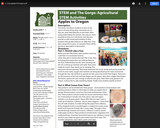
In this lesson, students are introduced to trees and the many things we commonly use that come from trees. Includes introductory movement activity, guided discussion, a matching game, and fun facts.
NGSS: Partially meets 1-LS1-1, 2-PS1-1, 2-PS1-2
Common Core: W.2.7, W.2.8
Time: 30 minutes
Materials: "Apples to Oregon" book and three paper lunch bags labled: wood, food, cellulose.
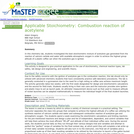
Practical lab into the chemical reaction between calcium carbide and water and the resulting ignition of acetylene gas.
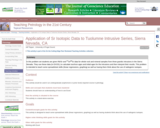
In this problem set students are given Rb/Sr and 87Sr/86Sr data for whole rock and mineral samples from three granitic intrusions in the Sierra Nevada. They use these data (in EXCEL) to calculate isochron ages and initial ages for the intrusions and then interpret their results. This problem is intended to teach some spreadsheet skills (linear regressions, graphing) as well as having them think about the use of radiogenic isotopes.
(Note: this resource was added to OER Commons as part of a batch upload of over 2,200 records. If you notice an issue with the quality of the metadata, please let us know by using the 'report' button and we will flag it for consideration.)
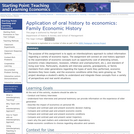
Application of Oral History to Economics: Family Economic History The assignment will connect an oral history approach to the examination of economic concepts such as opportunity cost of attending school, economic crises (inflation and unemployment, etc.), and standard of living over time. Particularly, students will interview parents, grandparents, or family members from older generations regarding the types of work they performed, economic decisions they have made, and the economic conditions while they were growing up. The project develops a student's ability to understand and integrate these concepts from a variety of perspectives and real world situation.

Developed in partial fulfillment of doctoral studies.

Does the real-world application of science depend on mathematics? In this activity, students answer this question as they experience a real-world application of systems of equations. Given a system of linear equations that mathematically models a specific circuit—students start by solving a system of three equations for the currents. After becoming familiar with the parts of a breadboard, groups use a breadboard, resistors and jumper wires to each build the same (physical) electric circuit from the provided circuit diagram. Then they use voltmeters to measure the current flow across each resistor and calculate the current using Ohm’s law. They compare the mathematically derived current values to the measured values, and calculate the percentage difference of their results. This leads students to conclude that real-world applications of science do indeed depend on mathematics! Students make posters to communicate their results and conclusions. A pre/post-activity quiz and student worksheet are provided. Adjustable for math- or science-focused classrooms.
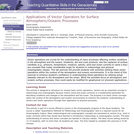
This lab exercise provides students with activities utilizing vector operations within the context of the atmospheric and oceanic environments.
(Note: this resource was added to OER Commons as part of a batch upload of over 2,200 records. If you notice an issue with the quality of the metadata, please let us know by using the 'report' button and we will flag it for consideration.)
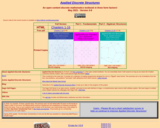
Best open source book in Discrete Math. Covers all the subjects in a standard Discrete Math class for mathematics or computer science students and contains sage cells for all subjects. Set Theory, Combinatorics, Logic, Relations, Recursion, Graph Theory, Trees, Algebraic Structures, Boolean Algebras, Automata, etc. Originally published commercially, its original text was peer-reviewed and was adopted for use at several universities throughout the country. Now in its open source version, has the same quality but it is free.
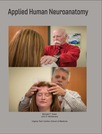
This 155-page manual is comprised of two types of learning activities: 1) free response fill-in-the blank questions focused of the facts and principles of neuroanatomy and neurophysiology that underpin the neurologic examination and specifically developed exercises that demonstrate how the facts and principles are related to the particular tests and procedures that comprise the neurologic examination. Free response questions form the bulk of the Neuroscience Review section of each chapter and are intended as a review of information previously or concurrently being learned regarding the structure, function and organization of the nervous system. Some questions focus on anatomical or physiological facts and relationships that help explain why certain techniques are performed as they are, such as why non-nociceptive tactile stimuli are required in order to activate nerve impulse transmission in the lemniscal system. Other questions are intended to revisit facts and concepts that are needed to properly interpret the elicited findings. 2) The Application Exercises of each chapter are designed to demonstrate how neuroanatomical and neurophysiological information is used in the design of particular clinical tests of neurologic function. The application exercises are also intended to help users learn how to perform and become comfortable with the various clinical maneuvers and tests that comprise the routine neurologic examination. An important outcome of performing these exercises is that, as a member of a learning group, each individual has the opportunity to experience the neurologic examination from the point of view of the subject (patient)—an experience that arguably provides insight and understanding that can be gained in no other way.
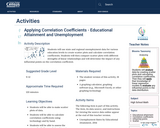
Students will use state and regional unemployment data for various education levels to create scatter plots and calculate correlation coefficients. Students will then compare scatter plots with different strengths of linear relationships and will determine the impact of any influential points on the correlation coefficient.
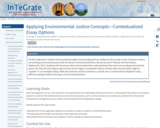
This is a writing assignment on the topic of environmental justice for a philosophy-oriented "Philosophy and the Environment" course. It provides somewhat realist scenarios for students to demonstrate their understanding of several theories and practices emerging from environmental ethical issues including race, class, gender, indigenous peoples, and international law and economics.
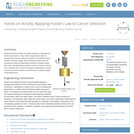
Students explore Hooke's law while working in small groups at their lab benches. They collect displacement data for springs with unknown spring constants, k, by adding various masses of known weight. After exploring Hooke's law and answering a series of application questions, students apply their new understanding to explore a tissue of known surface area. Students then use the necessary relationships to depict a cancerous tumor amidst normal tissue by creating a graph in Microsoft Excel.
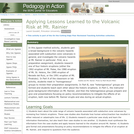
In this jigsaw-method activity on subduction zone volcanism, students apply lessons learned from four historic eruptions to the volcanic hazards associated with Mt. Rainier in the Pacific Northwest.
(Note: this resource was added to OER Commons as part of a batch upload of over 2,200 records. If you notice an issue with the quality of the metadata, please let us know by using the 'report' button and we will flag it for consideration.)
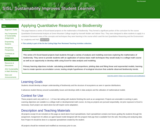
A series of 6 Excel-based projects on the mathematics of biodiversity for basic college math classes and developmental math classes. Students learn about the structure of biodiversity, the application of many basic data analysis skills, and the use of Excel for analysis and data presentation.
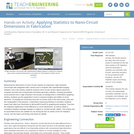
Measuring the dimensions of nano-circuits requires an expensive, high-resolution microscope with integrated video camera and a computer with sophisticated imaging software, but in this activity, students measure nano-circuits using a typical classroom computer and (the free-to-download) GeoGebra geometry software. Inserting (provided) circuit pictures from a high-resolution microscope as backgrounds in GeoGebra's graphing window, students use the application's tools to measure lengths and widths of circuit elements. To simplify the conversion from the on-screen units to the real circuits' units and the manipulation of the pictures, a GeoGebra measuring interface is provided. Students export their data from GeoGebra to Microsoft® Excel® for graphing and analysis. They test the statistical significance of the difference in circuit dimensions, as well as obtain a correlation between average changes in original vs. printed circuits' widths. This activity and its associated lesson are suitable for use during the last six weeks of the AP Statistics course; see the topics and timing note below for details.
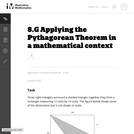
This task requires students to apply the Pythagorean Theorem.